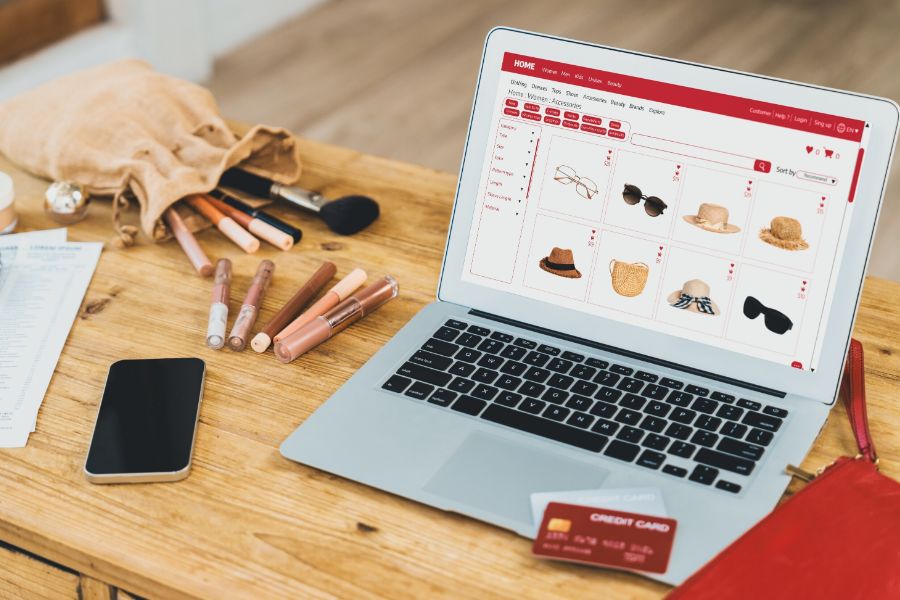Selling online is an exciting journey with tremendous possibilities for your company’s growth. In addition, when done correctly, your eCommerce site may generate online sales and develop engaging connections with your consumers, but it can also drive traffic to your stores and improve loyalty. Knowing the need to develop excellent omnichannel selling, we’ve compiled the 3 dos and don’ts of this process for retailers.
What is omnichannel selling?
From the first touchpoint to the last, omnichannel selling provides customers a seamless and integrated purchasing experience across different channels. This implies that each channel (either online or offline) works together to provide your brand with a cohesive message, voice, and identity.
Some of the most common forms of omnichannel selling are buy online pick up in-store, buy online and deliver to home, and dropshipping. Channels aren’t merely parallel to one another in omnichannel; they’re also synchronized. Therefore, companies can better lead their customers’ journeys by personalizing marketing material, upselling related goods and services, and predicting problems.
Inventory data is shared across channels in omnichannel systems, thus reducing the danger of inventory being stagnant and unsold. Storage and opportunity expenses are reduced as a result. The “endless aisle” idea, which is used by stores including Coach, Kohl’s, Greatest Buy, Sears, Macy’s, and Walmart, is one of the best examples of omnichannel selling. These businesses allow in-store customers to explore online inventory and have things delivered or picked up.
It is now clear that omnichannel selling is providing your customers a chance to shop across different platforms. Here are the 3 dos and don’ts that retailers must know.
Dos Omnichannel Selling
Map out customers’ shopping experience
Customer behavior in omnichannel selling can be even more complex than in traditional retail. Consumers anticipate lightning-fast delivery and may make purchases at any time of day or night (because shopping is now available online).
To establish a solid omnichannel strategy, you must first understand and map your customers’ purchase behaviors and decision-making processes. You should know where and when they shop, how often they come back, what your best-sellers are, how they want to pay, and so on. As a result, acquiring high-quality, real-time analytics is important to build a successful omnichannel selling model.
Stay connected with customers
Allowing customers to track orders is a perfect way to increase the quality of omnichannel selling. Many big eCommerce sites such as Amazon or Shopee already fulfill that requirement by providing customers with a unique booking reference. With this booking code, customers can easily track their own purchased products – whether they are being shipped or still processed in the warehouse.
In addition, live online chat is another useful way. Adding an online chat platform to your eCommerce site allows users to connect and ask questions in real-time rather than having to phone or wait for an email answer. This makes the personal one-on-one online experience as if in the physical store. Reducing the amount of time your consumers have to wait is beneficial to your bottom line.
Use an omnichannel technology
There are several types of software available today to assist businesses in catering to their consumers’ omnichannel purchasing journeys. CRM is a great example of this. It stands for customer relationship management, which allows organizations to keep in better touch with their consumers. You can simply categorize consumers, manage customer service campaigns, and deliver personalized marketing with CRM technologies. Because your company is growing across several channels, CRM will ensure that you keep in touch with consumers in a consistent manner.
Another popular omnichannel software is a point of sale (POS) system. POS can act as an all-in-one solution. Sales transactions, inventory management, and other tasks may all be handled by a robust omnichannel POS. Customers can, for example, buy online and pick up in-store using ConnectPOS. When using the POS, businesses choose the option to buy online and pick up in-store when checking out. These actions may be carried out with just a few clicks.
Don’ts Omnichannel Selling
Ignore the in-store experience
It’s easy to forget about your brick-and-mortar shops when developing your omnichannel selling strategy with a big emphasis on digital platforms. To be truly omnichannel, the purchasing experience must be one seamless experience in which customers can go from laptop/ tablet/ smartphone to offline store.
Successful omnichannel firms are using mobile technology to deliver customized in-store experiences. Whether it’s an app that allows users to scan QR codes in-store to compare costs or one that lets you use your smartphone as a regular buyer’s card, there’s something for everyone.
Lose track of inventory level
Inventory was relatively simple for traditional brick-and-mortar stores. You placed things on the shelves and refilled them if they are sold out. In the omnichannel experience, customers can now order at any time, from any location, on any platform. This means that if you don’t have a system in place to keep track of your inventory in all of your locations, from the warehouse to the showroom, you’ll rapidly find yourself in hot water. This is because sales are now happening both online and offline, which can easily create misinformation.
Forget employee training
Moving online doesn’t mean your employees are less important. Instead, they have to be more knowledgeable about omnichannel! Remember: No matter how good your omnichannel strategy is, if you don’t have a well-trained team to put it into action, it’s a waste of time. Retail boils down to offering quality, professional, and courteous service to your consumers, regardless of the channel they use.
Therefore, your employees should understand all there is to know about your omnichannel strategy. The knowledge ranges from marketing to mobile applications and tools. Employees should give a smooth, delightful shopping experience for your consumers whether they’re working in a contact center or on the sales floor.
Wrapping up
Taking your business online is an exciting task almost unavoidable nowadays. However, doing it effectively requires going beyond just creating an eCommerce website.
Our final advice is that, don’t just go digital. Consider going beyond omnichannel selling. Think about how your brand can provide consistent consumer experiences across all touchpoints. If you think ConnectPOS can be a good partner in this omnichannel journey, our team is always ready to help. Don’t hesitate to contact us!
ConnectPOS is a all-in-one point of sale solution tailored to meet your eCommerce POS needs, streamline business operations, boost sales, and enhance customer experience in diverse industries. We offer custom POS with features, pricing, and plans to suit your unique business requirements.




